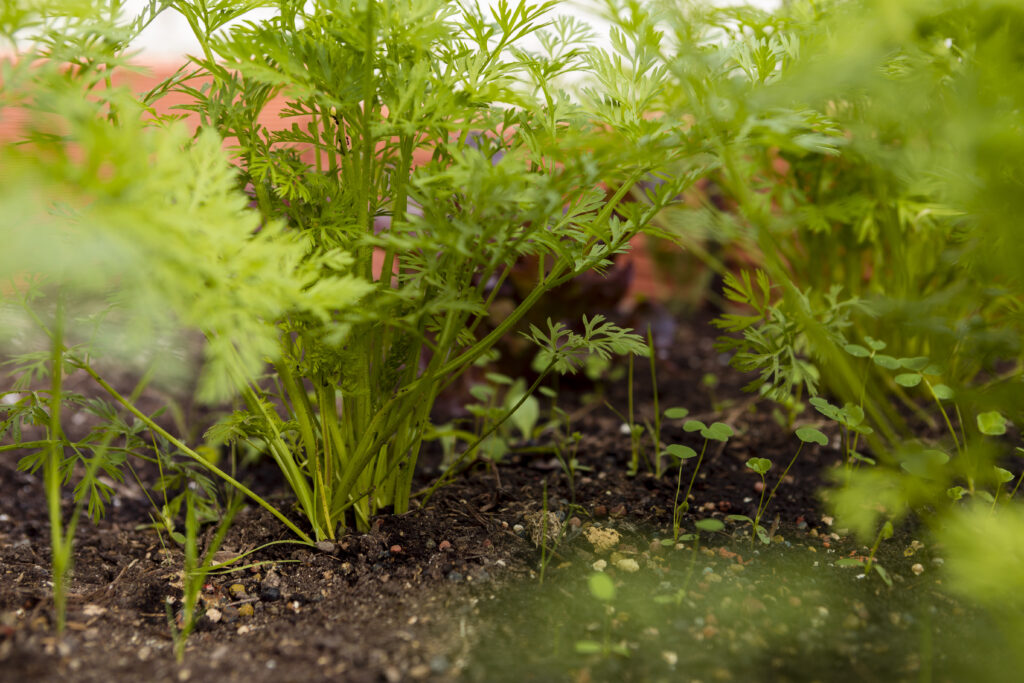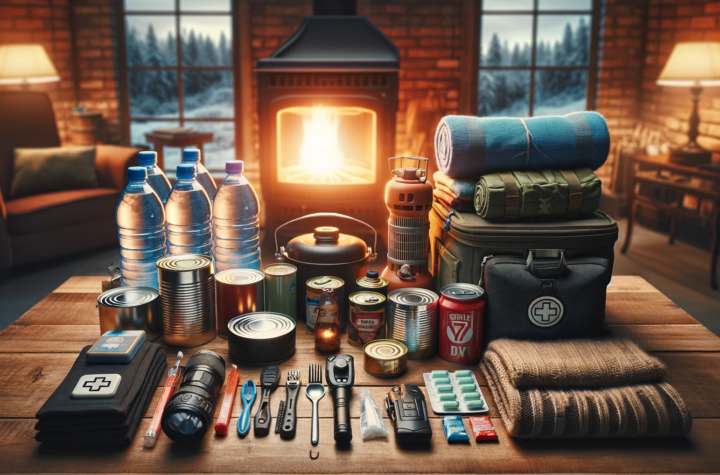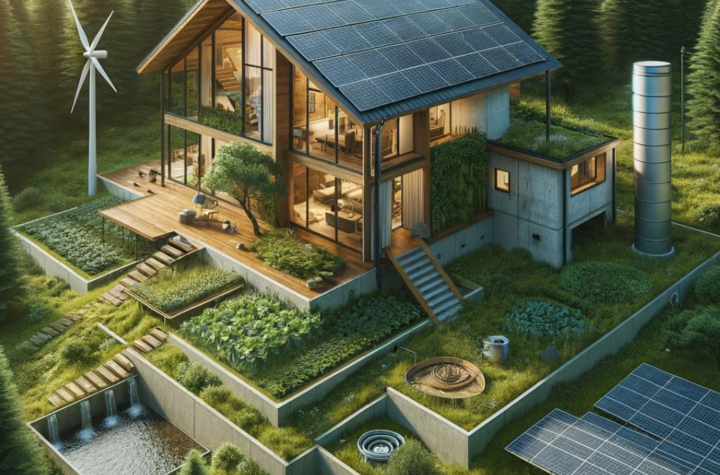
Here are some tips for growing a successful preparedness garden:
Choose the right location:
Your garden should be in a sunny spot with well-draining soil. If you don’t have a lot of space, consider using raised beds or containers.
- Sunlight: Choose a location that gets plenty of sunlight. Most vegetables need at least 6 hours of direct sunlight per day to grow properly. Look for a spot that gets sunlight in the morning and early afternoon, as this will provide the best growing conditions.
- Soil: Choose a location with well-draining soil that is rich in organic matter. Avoid areas with heavy clay soil, as this can lead to poor drainage and waterlogging. If your soil is poor, consider building raised garden beds or adding compost and other organic matter to improve the soil quality.
- Water: Choose a location that is near a water source, such as a hose or irrigation system. Vegetables need regular watering to grow properly, so it’s important to have easy access to water.
- Shelter: Choose a location that is sheltered from strong winds and other extreme weather conditions. A sheltered spot will protect your plants from damage and help them grow strong and healthy.
- Accessibility: Choose a location that is easy to access and maintain. You’ll need to be able to tend to your garden regularly, so make sure it’s in a convenient location that you can easily reach.
Select the right plants:
Selecting the right plants for your preparedness garden is essential to ensuring a successful harvest.
- Choose plants that grow well in your climate: Different plants thrive in different climates, so it’s important to choose plants that are well-suited to your area. Consider the average temperatures, rainfall, and sunlight in your region when selecting plants.
- Consider your soil: Some plants require specific soil types to grow properly, so it’s important to choose plants that are compatible with your soil. For example, if you have heavy clay soil, you may want to choose plants that are tolerant of those conditions.
- Determine your garden’s purpose: Are you growing a garden to provide food during an emergency or to supplement your regular diet? Choose plants that will fulfill your purpose. Focus on plants that are high in nutrients, such as leafy greens, root vegetables, and fruits.
- Choose plants that are easy to grow: If you’re new to gardening, or if you have limited time to tend to your garden, choose plants that are easy to grow and maintain. Vegetables like tomatoes, cucumbers, and beans are relatively easy to grow and don’t require a lot of specialized care.
- Plan for year-round harvest: Consider planting a variety of plants that will produce at different times of the year. This will help ensure a steady supply of fresh produce throughout the year.
Start small:
Don’t try to grow too much at once. Start with a few plants and gradually expand your garden as you gain experience.
Starting small is a great way to get into gardening and to gradually build up your skills.
- Start with container gardening: Container gardening is a great way to start small, as it allows you to grow plants in small spaces like balconies or patios. Choose plants that are suitable for container gardening, such as herbs, cherry tomatoes, and peppers.
- Focus on a few plants: Instead of trying to grow a large variety of plants, focus on a few plants that are easy to grow and that you enjoy eating. This will make it easier to care for your garden and to keep track of what’s growing.
- Consider raised beds: If you have a small yard, consider building a raised garden bed. This will help you maximize your growing space and make it easier to care for your plants.
- Use quality soil and fertilizer: Invest in high-quality soil and fertilizer to give your plants the best chance of success. This is particularly important when you’re starting small, as your plants will be more vulnerable to pests and disease.
- Take advantage of vertical space: If you’re short on space, consider using trellises or hanging baskets to grow plants vertically. This will help you maximize your growing space and increase your yield.
Starting small is a great way to get into gardening and to build up your skills and experience gradually. By following these tips, you can start a small preparedness garden and enjoy the many benefits of growing your own food.
Use companion planting:
Planting certain crops together can help them grow better and deter pests. For example, planting basil near tomatoes can improve their flavor and repel insects.
Companion planting is a technique that involves planting certain crops together to help them grow better and to deter pests.
- Plant herbs with vegetables: Herbs like basil, parsley, and chives can help repel pests and improve the flavor of vegetables. Plant these herbs near vegetables like tomatoes, peppers, and eggplants to enhance their growth and flavor.
- Plant flowers with vegetables: Certain flowers, such as marigolds, nasturtiums, and calendula, can help repel pests and attract beneficial insects like bees and butterflies. Plant these flowers near vegetables to improve their growth and deter pests.
- Rotate crops: Rotating crops is a form of companion planting that involves alternating the crops planted in a particular area each year. This helps to prevent the build-up of soil-borne diseases and pests that can harm plants.
- Consider plant combinations: Certain plant combinations can also benefit each other. For example, planting beans with corn can help the beans climb up the corn stalks, while the beans add nitrogen to the soil, which benefits the corn.
- Avoid planting certain crops together: Some plants are not good companions and can actually harm each other’s growth. For example, planting tomatoes and potatoes together can lead to the spread of diseases that affect both plants. It’s important to do your research and avoid planting incompatible crops together.
By using companion planting techniques in your preparedness garden, you can improve the growth and health of your plants and deter pests naturally.
Practice crop rotation:
Don’t plant the same crop in the same spot year after year. This can lead to soil depletion and pest problems.
Crop rotation is a technique that involves alternating the crops planted in a particular area each year to prevent the build-up of soil-borne diseases and pests.
- Plan your garden layout: Before you start planting, plan out your garden layout for the next several years. Decide which crops you want to grow and where you want to plant them.
- Divide your garden into sections: Divide your garden into sections based on the types of crops you’re planting. For example, you might have one section for legumes, one for brassicas, one for nightshades, and so on.
- Follow a four-year rotation cycle: A four-year rotation cycle is a common practice that involves dividing your garden into four sections and planting crops in a different section each year. This allows the soil to rest and recover between plantings and helps to prevent the build-up of pests and diseases.
- Plant cover crops: Cover crops, such as clover or rye, can be planted in the fall after your harvest to help improve soil health and fertility. They also help to prevent soil erosion and weed growth.
- Keep track of what you plant: Keep a record of what you plant each year, where you plant it, and any issues or successes you have with each crop. This will help you plan your crop rotation in future years and make adjustments based on your experience.
By practicing crop rotation in your preparedness garden, you can improve soil health, prevent the build-up of pests and diseases, and ensure a bountiful harvest for years to come.
Preserve your harvest:
Learn how to can, freeze, or dry your produce so that you can enjoy it all year long.
Preserving your harvest is an important part of gardening, as it allows you to enjoy the fruits of your labor throughout the year.
- Canning: Canning is a popular method of preserving fruits and vegetables. It involves placing the food in glass jars and then heating the jars to kill bacteria and prevent spoilage. Canned food can last for up to a year or more if stored properly.
- Freezing: Freezing is another popular method of preserving food. Most fruits and vegetables can be frozen, either raw or cooked. Frozen food can last for several months if stored properly.
- Drying: Drying is a simple and inexpensive method of preserving fruits and vegetables. It involves removing the moisture from the food by hanging it in a warm, dry place or using a dehydrator. Dried food can last for several months if stored properly.
- Pickling: Pickling involves preserving food in a solution of vinegar, water, and salt. Most vegetables can be pickled, and the resulting pickles can be stored for several months in the refrigerator.
- Jamming and jelly making: Jamming and jelly making are methods of preserving fruit by cooking it with sugar and pectin. The resulting jams and jellies can be stored for several months in the refrigerator.
By preserving your harvest, you can enjoy the fruits of your labor throughout the year and reduce your dependence on store-bought food. Choose the method that works best for you and your harvest, and follow the proper procedures to ensure the safety and quality of your preserved food.
Some common mistakes people make when growing a preparedness garden include:
Not planning ahead:
It’s important to plan your garden before you start planting. This includes choosing the right location, selecting the right plants, and determining how much space you’ll need.
Not planning ahead when growing a preparedness garden can lead to several problems. Here are some of the most common ones:
- Poor crop selection: If you don’t plan ahead, you may end up choosing crops that don’t grow well in your area, don’t provide enough nutrition, or don’t store well. This can lead to wasted time and effort, as well as a lower yield.
- Overplanting or underplanting: Without a plan, you may end up planting too much or too little of a particular crop. Overplanting can lead to overcrowding and a lower yield, while underplanting can leave you without enough food to sustain you.
- Soil health issues: If you don’t plan ahead, you may not take into account the health of your soil. This can lead to soil depletion, which can make it difficult for your plants to grow and produce healthy crops.
- Pests and diseases: Without a plan, you may not take into account the potential pests and diseases that can affect your crops. This can lead to an infestation that can devastate your garden and ruin your harvest.
- Lack of storage options: If you don’t plan ahead, you may end up with more produce than you can store or use. This can lead to waste and a lower yield in future years.
Overall, not planning ahead when growing a preparedness garden can lead to a lower yield, wasted time and effort, and potentially serious food shortages in the long run. It’s important to take the time to plan out your garden, choose the right crops, and consider factors such as soil health, pest and disease management, and storage options.
Overcrowding plants:
Plants need room to grow and thrive. Make sure to give them enough space so that they’re not competing with each other for nutrients and sunlight.
Overcrowding plants is a common mistake that can have negative consequences for your preparedness garden. Here are some problems that can arise from overcrowding plants:
- Reduced yield: When plants are overcrowded, they compete for resources such as water, nutrients, and sunlight. This can result in stunted growth and a lower yield of fruits or vegetables.
- Increased risk of disease: Overcrowded plants can create a warm and humid environment that is ideal for the growth of fungal diseases. This can lead to a higher risk of plant diseases such as powdery mildew, blight, and rust.
- Pest infestation: When plants are overcrowded, it can be harder to detect and manage pest infestations. Pests can easily spread from plant to plant, and the close proximity of plants can make it easier for pests to hide and multiply.
- Difficulty with harvesting: When plants are too close together, it can be difficult to access the fruits or vegetables for harvesting. This can result in damage to the plant or the produce, reducing the quality and yield.
To avoid overcrowding plants, make sure to follow the recommended spacing guidelines for each type of plant. When planting seeds or seedlings, consider the mature size of the plant and provide enough space for it to grow. Thin out seedlings as needed to ensure that each plant has enough room to thrive. By giving your plants enough space to grow, you can avoid many of the problems associated with overcrowding, and enjoy a healthy and bountiful harvest.
Not watering enough:
Plants need water to grow, so make sure to water them regularly. However, be careful not to overwater them as this can lead to root rot.
Not watering your preparedness garden enough can have several negative consequences. Here are some problems that can arise from not watering your garden adequately:
- Stunted growth: Water is essential for plant growth, and a lack of water can cause plants to become stunted and underdeveloped. This can lead to a lower yield of fruits or vegetables.
- Wilting: When plants don’t receive enough water, they may begin to wilt and droop. This is a sign that the plant is dehydrated and needs water.
- Root damage: A lack of water can also cause damage to the roots of plants. When the soil is too dry, the roots can become brittle and may break or die, leading to plant damage or death.
- Increased risk of pests and disease: When plants are stressed due to a lack of water, they become more susceptible to pests and diseases. This is because their natural defenses are weakened, making them more vulnerable to attack.
To avoid the problems associated with not watering your preparedness garden enough, make sure to water your plants regularly, especially during hot or dry weather. Use a watering can, hose, or drip irrigation system to provide a steady supply of water to your plants. Make sure to water deeply, so that the water reaches the roots of the plants. You can also use mulch to help retain moisture in the soil and reduce the amount of watering needed. By providing your plants with enough water, you can ensure healthy growth and a bountiful harvest.
Ignoring pests:
Pests can quickly destroy a garden if left unchecked. Keep an eye out for signs of pests and take action to control them before they become a problem.
Ignoring pests in your preparedness garden can lead to a number of problems. Here are some issues that can arise from ignoring pests:
- Reduced yield: Pests can cause significant damage to plants, including the destruction of leaves, stems, and fruits. This can lead to a lower yield of fruits or vegetables, or even complete crop loss.
- Spread of disease: Some pests can also spread diseases between plants. This can result in the rapid spread of diseases that can cause significant damage to your garden.
- Increased pest populations: Ignoring pests can allow them to multiply rapidly, making it more difficult to control their populations later on.
- Negative impact on the environment: Some pesticides used to control pests can have negative impacts on the environment, including harm to beneficial insects, soil microorganisms, and other wildlife.
To avoid the problems associated with ignoring pests, it’s important to monitor your garden regularly for signs of pest activity. Look for chewed leaves, holes in fruits or vegetables, or signs of pests such as aphids, beetles, or caterpillars. If you detect a pest infestation, take action immediately to control the population. This may involve using organic pest control methods such as handpicking, using insecticidal soaps or oils, or introducing beneficial insects that prey on the pests. By staying vigilant and taking action when needed, you can protect your preparedness garden from the negative effects of pests, and enjoy a healthy and bountiful harvest.
Not fertilizing:
Plants need nutrients to grow, so it’s important to fertilize your garden regularly. Use organic fertilizers like compost or worm castings to provide your plants with the nutrients they need.
Not fertilizing your preparedness garden can have several negative consequences. Here are some problems that can arise from not fertilizing your garden adequately:
- Poor plant growth: Fertilizers provide essential nutrients that plants need to grow, such as nitrogen, phosphorus, and potassium. Without these nutrients, plants may grow slowly and produce smaller yields.
- Nutrient deficiencies: When plants are not fertilized properly, they may become deficient in certain nutrients, leading to a range of problems such as yellowing leaves, stunted growth, and poor fruit or vegetable quality.
- Increased susceptibility to pests and disease: When plants are not healthy due to a lack of nutrients, they become more susceptible to pests and diseases. This is because their natural defenses are weakened, making them more vulnerable to attack.
- Depleted soil: Over time, plants can deplete the soil of essential nutrients, making it more difficult for future crops to grow.
To avoid the problems associated with not fertilizing your preparedness garden, it’s important to provide your plants with the nutrients they need to grow and thrive. This can be done through the use of organic or synthetic fertilizers, or by incorporating compost or other organic matter into the soil. Before applying fertilizers, it’s important to test the soil to determine which nutrients are needed. This will help you avoid over-fertilizing, which can lead to other problems such as nutrient runoff and environmental pollution. By fertilizing your preparedness garden properly, you can ensure healthy plant growth and a bountiful harvest.





More Stories
How to Start Prepping: A Fun and Easy Guide to Being Prepared for a Week
This is why you need storage of food, groceries, tools and other supplies.
Top 43 Items To Put In Your Emergency Storage